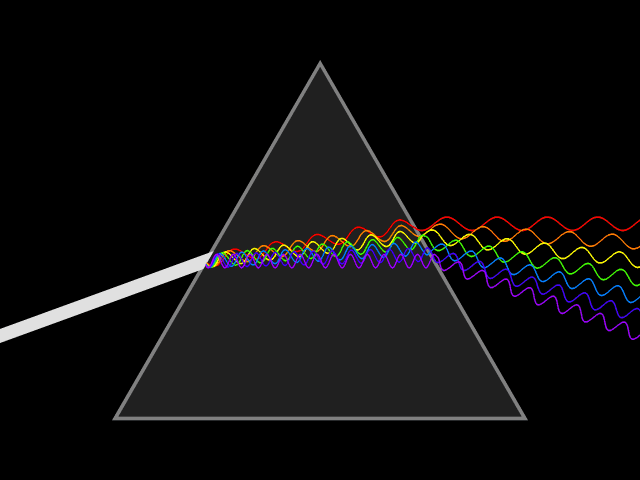Dyakonov–Voigt wave on:
[Wikipedia]
[Google]
[Amazon]
 A Dyakonov–Voigt wave (also known as DV wave and Dyakonov–Voigt surface wave) is a distinctive type of
A Dyakonov–Voigt wave (also known as DV wave and Dyakonov–Voigt surface wave) is a distinctive type of
 A Dyakonov–Voigt wave (also known as DV wave and Dyakonov–Voigt surface wave) is a distinctive type of
A Dyakonov–Voigt wave (also known as DV wave and Dyakonov–Voigt surface wave) is a distinctive type of surface
A surface, as the term is most generally used, is the outermost or uppermost layer of a physical object or space. It is the portion or region of the object that can first be perceived by an observer using the senses of sight and touch, and is t ...
electromagnetic
In physics, electromagnetism is an interaction that occurs between particles with electric charge. It is the second-strongest of the four fundamental interactions, after the strong force, and it is the dominant force in the interactions of a ...
light wave
In physics, electromagnetic radiation (EMR) consists of waves of the electromagnetic (EM) field, which propagate through space and carry momentum and electromagnetic radiant energy. It includes radio waves, microwaves, infrared, (visible) lig ...
that results from a particular manipulation of crystals. It was discovered in 2019 by researchers from the University of Edinburgh
The University of Edinburgh ( sco, University o Edinburgh, gd, Oilthigh Dhùn Èideann; abbreviated as ''Edin.'' in post-nominals) is a public research university based in Edinburgh, Scotland. Granted a royal charter by King James VI in 15 ...
and Pennsylvania State University
The Pennsylvania State University (Penn State or PSU) is a public state-related land-grant research university with campuses and facilities throughout Pennsylvania. Founded in 1855 as the Farmers' High School of Pennsylvania, Penn State becam ...
and its unique properties were described based on models involving equations
In mathematics, an equation is a formula that expresses the equality of two expressions, by connecting them with the equals sign . The word ''equation'' and its cognates in other languages may have subtly different meanings; for example, i ...
developed in the mid-1800s by mathematician and physicist James Clerk Maxwell
James Clerk Maxwell (13 June 1831 – 5 November 1879) was a Scottish mathematician and scientist responsible for the classical theory of electromagnetic radiation, which was the first theory to describe electricity, magnetism and ligh ...
. Its discoverers found that the wave is produced at the specific interface between natural or synthetic crystals and another material, such as water or oil. Such DV waves were found to travel in a single direction, and decay as they moved away from the interface. Other types of such surface waves, like Dyakonov surface waves (DSWs), travel in multiple directions, and decay more quickly. DV waves decay as "the product of a linear and an exponential function of the distance from the interface in the anisotropic medium," but the fields of the Dyakonov surface waves decay "only exponentially in the anisotropic medium". Research co-leader Tom Mackay noted: "Dyakonov–Voigt waves represent a step forward in our understanding of how light interacts with complex materials, and offer opportunities for a range of technological advancements." Applications of the newly found waves may include biosensor improvements for blood sample screening, and fiber optic circuit developments, to permit a better transfer of data.
This wave is now classified as an exceptional surface wave.
See also
* Dyakonov surface waves *Maxwell's equations
Maxwell's equations, or Maxwell–Heaviside equations, are a set of coupled partial differential equations that, together with the Lorentz force law, form the foundation of classical electromagnetism, classical optics, and electric circuits.
Th ...
References
{{DEFAULTSORT:Dyakonov-Voigt wave Condensed matter physics Surface waves